QuestionQUESTION: I have a porcupine puffer that has some white spots on him, looks like he is losing patches of skin. They are medium sized. It does not sound like ick from what i have read. His color is normal and so is his behavior. I know it isnt bullying because he is the big guy in the tank. There is one above his eye and a few on other parts of him. He had a few spots a month or so ago that are healing, but i noticed new ones yesterday. Any clue whats going on with him? Could this be ick?
ANSWER: Hi Ginny. Ich would look like small white spots about the size of a grain of salt sprinkled on the fish(although you can get a mild infection which would look like a small spot here and there). It sounds more like a bacterial infection since you described it as patches on the skin. Porcupine puffers require exceptionally good water quality in order to remain healthy. If the fishes immune system is compromised because of a water quality issue it makes it more susceptible to invading organisms and bacterial infections. Sometimes if water quality is corrected and the fish is fed a high quality and variety of foods with an added vitamin supplement the natural immune system of the fish can kick in and the fish will get better on its own. The number one cause of any kind of infection, especially in a porcupine puffer, is poor water quality bullying or poor nutrition. These fish are easy to maintain as long as they are being kept properly. What size tank do you have him in? What other fish are in the tank with him? Just because he may be the biggest fish in the tank does not mean he can not be picked on. Some more aggressive fish do not realize how small they are! In all honesty it is really hard for me to diagnose a disease or problem with a fish with just a short description. I would need much more info in order to make a more accurate diagnosis. Tank size, equipment, frequency of water changes, water testing, tankmates, how long you had the fish, feeding, and any other thing that may seem relevant to the problem would be needed to diagnose a certain condition. Upon the info you have given I can only assume the most common problems that marine fish have. Since it does not sound like ich then I am only making an assumption that it would be bacterial. There are only three things to choose from; parasites(ich, velvet...) bacteria, and virus. A viral infection would look more like a cottony growth on the fish. You can try feeding his favorite food soaked in a solution of 250 mg of Kanamycin(or erythromycin, gentamycin or terramycin) per 1 ounce of food. Feed this way twice a day for 2 weeks. Any bacterial infection should be kicked after this treatment. It is not advisable to add doses of antibiotics to the water to treat the fish. This would kill off all your good bacteria and can make conditions worse for all the inhabitants of your tank. The small amount that gets into your tank from the feeding should not have a significant impact on your biological filter.
---------- FOLLOW-UP ----------
QUESTION: Thank you so much for your response! From what you have described I am positive it is not ich. In the tank we have the puffer, 2 angles and 2 clown fish. I really do not think any of them act aggressive, including the puffer. Could be wrong, but I don't think so. I feed them frozen brine shrimp and another type of small frozen shrimp. Also a vegetarian pellet, and twice a month or so some live ghost shrimp. Is this a sufficient diet? They all eat the frozen, everyone other than the puffer eat the pellets, and the live shrimp are really only a treat for him. The others don't show as much interest, but the clown fish will go after one if its right in front of them. They all seem content as can be. We have had all but the puffer for over a year. The puffer did not eat for the first month after we got him but one day he just started eating and swimming up against the glass, following the container I use to put the food in. Everyone loves him. We have had him for about 6 months. I am wondering about it possibly being the quality of the water. This is at work so I don't have control of that, but I do feed them and have really grown to love them and I am sure their owners would gladly take care of them properly if they knew they were doing it wrong. Its a large tank. I do not know how many gallons, but its big. And I also am not sure how often the water is changed or treated. How often would you recommend? I really thought at first that he had rubbed up against something and it injured his skin, but since there seem to be more spots appearing I don't think that it. It is always very cold in there, could the temperature have something to do with it? Today the spots looked better than yesterday as if they are healing once again. Thanks again for your response, I really really appreciate it.
AnswerHello again! Quite possibly you are dealing with a water quality problem. The tank should have water changes performed once every two weeks to a month depending on what the water levels are testing at. If nitrate is high(over 20 ppm) it will cause problems with the fish and porcupine puffers do not tolerate poor water quality well. It sound like you are feeding good but I would recommend staying away from the brine shrimp. They do not have very much nutrition and are not a very good choice for this kind of fish. I would recommend feeding mysis shrimp, crab, lobster, squid, prawn and some krill as well as the once in a while treat of ghost shrimp. Puffers have large teeth that can become over grown in time if he is not offered larger crustaceans with the shell on. Most mollusks are greedily taken especially is they still possess their shell. Opening the shell to extract the meat wears down their constantly growing teeth. All puffers should also have a bit of algae in their diet. This can be done by purchasing some marine algae paper, sold at any fish supply store, and placing in the tank with a veggie clip. The puffer may not go after it at first but in time will start to nibble at it. The angels should have this as well. I do not recommend algae pellets because they will foul the water and possibly cause cloudiness if some of them go uneaten. The temperature of the water should remain a constant 78-80 degrees F. and if it is kept any colder you may notice the fish not being as active as they should be. If the room the tank is in is cold it may not have any effect on the tank as long as there is a good heater in there. I can understand how endearing these fish are and as far as any fish goes they can become more of a pet then simply a part of the furniture!

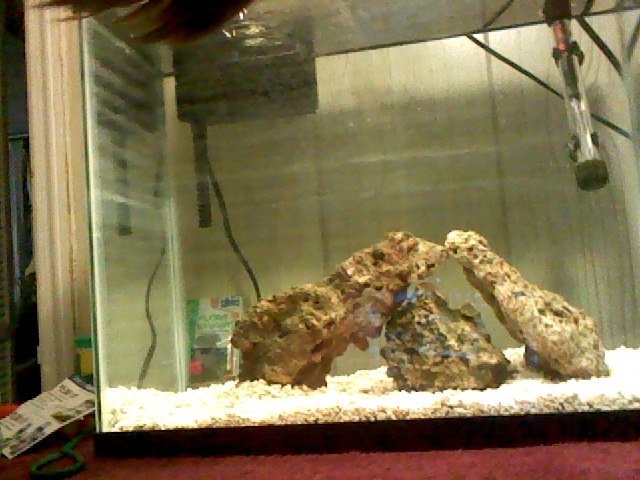 15 gallon FOWLR
Question
un populated
Im am setting up a 15 gallon FOW
15 gallon FOWLR
Question
un populated
Im am setting up a 15 gallon FOW
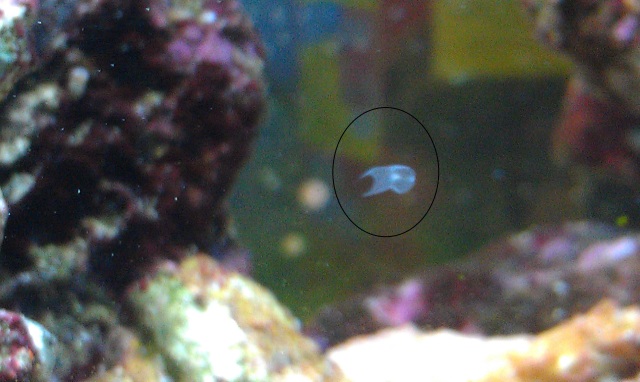 unknown creature
Question
unknow creature
I found these creatures
unknown creature
Question
unknow creature
I found these creatures
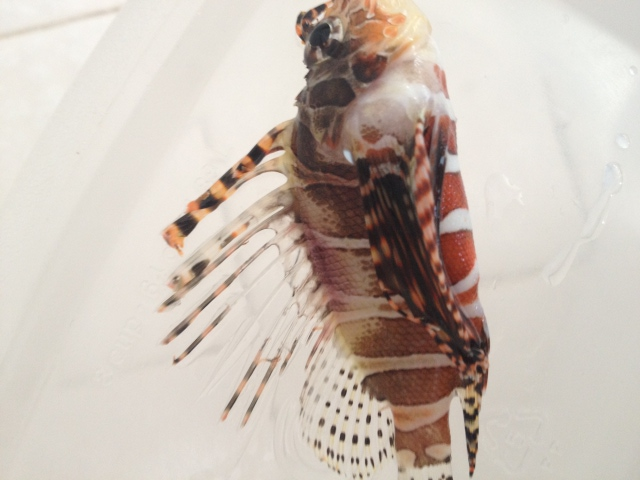 dwarf lion fish dead no idea cause of death
Questiondead fish 10 sec after
dead fish body 10
dwarf lion fish dead no idea cause of death
Questiondead fish 10 sec after
dead fish body 10
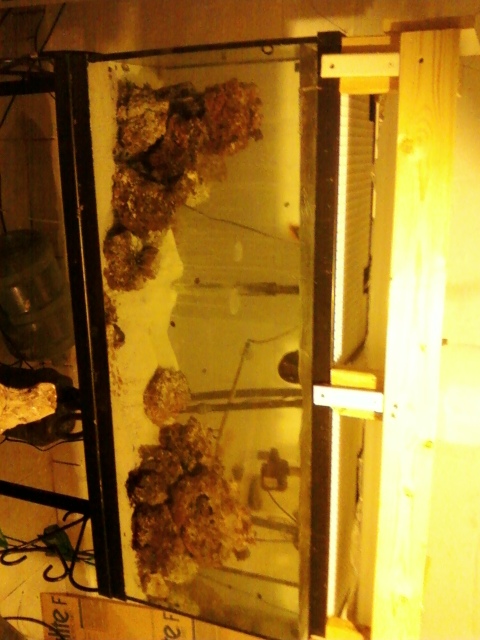 New setup
Question55gal
QUESTION: Hello, my question is ho
New setup
Question55gal
QUESTION: Hello, my question is ho
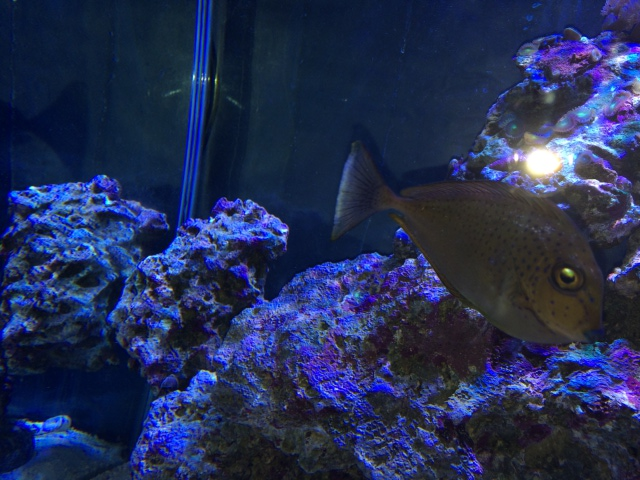 Possible Tang Ich
Question
Unicorn Tang Unicorn Tang
Hi Davi
Possible Tang Ich
Question
Unicorn Tang Unicorn Tang
Hi Davi